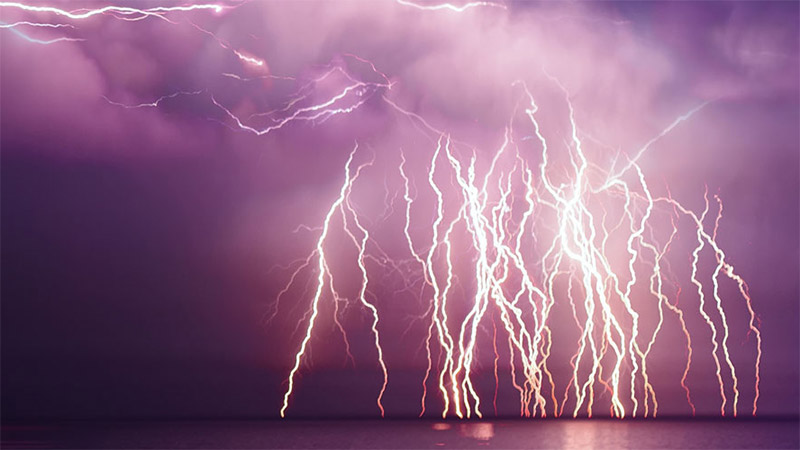Atlantic hurricane season 2024 wrap-up: High expectations and high impact
The 2024 Atlantic hurricane season, which runs from June 1 to November 30, has officially concluded, leaving behind a year of unusual events. Forecasters anticipated an above-average season, most notably due to record-breaking sea surface temperatures, but the season was challenging in several ways.
A season of extremes
This hurricane season was notably active and unusual. Despite a slow start due to a large stationary heat dome over Central America and Mexico, the hurricane season escalated quickly with Hurricane Beryl breaking the record for the earliest Category 5 hurricane.
In addition, strong hurricanes like Milton and Helene, significant damage and fatalities, unusual weather patterns, and late-season activity all contributed to making this season one of the most extreme on record. These elements highlight the intensity and unpredictability of the 2024 hurricane season:
- High activity: The season saw 18 named storms, 11 hurricanes, and 5 major hurricanes, making it one of the more active seasons on record.
- Early and strong hurricanes: Hurricane Beryl, which formed in June, became the earliest Category 5 hurricane on record. This was followed by Hurricane Milton, the strongest storm of the season, with winds reaching 180 mph.
- Multiple Category 5 Hurricanes: This season was the first since 2019 to have multiple Category 5 hurricanes.
- Unusual weather patterns: The season experienced an unusual lull in activity in late August and early September due to the presence of the Saharan air layer, which suppressed storm formation.
- Late-season activity: October and November were particularly active, with several strong storms forming, including Hurricane Rafael, which tied the record for the strongest November hurricane in the Gulf of Mexico.
The storms have resulted in hundreds of fatalities and over $190 billion in damage. Most damage was attributed to Beryl, Helene, and Milton.
Continued effects of climate change: Lessons from 2024
As climate change continues to reshape global weather patterns, hurricanes are becoming increasingly unpredictable in terms of strength, trajectory, and impact. Warming sea surface temperatures are extending the length of, and increasing the intensity of hurricane seasons.
One notable phenomenon linked to climate change is the rise of atmospheric rivers. The 2024 hurricane season highlighted the critical impact of these "rivers in the sky," especially in North America. These atmospheric rivers transported vast amounts of water vapor, leading to extreme weather events, particularly in California. The state experienced record-breaking rainfall, flooding, and mudslides, with atmospheric rivers contributing to some of the most intense rainfall rates ever recorded. Their size and frequency have been increasing both in the US and globally.
The upside of these atmospheric rivers is that they are vital for droughts, being an important source of water supply in dry regions. As an example, they contribute up to 50% of California’s rain and snow. To mitigate the harms and reap the benefits, it is vital to have meteorological measurements to forecast them.
Measurements for mitigation
When it comes to hurricane preparedness and mitigation, accurate forecasting and real-time observations are critical to making informed decisions and issuing evacuation orders. The key to this preparedness lies in the quality and timeliness of weather observations.
One of the most powerful tools in hurricane research is the Vaisala-manufactured National Center for Atmospheric Research dropsonde*. To gather critical measurement data, scientists aboard specialized aircraft release these high-tech instruments into the storm.
In 2024 alone the amount of dropsondes more than doubled compared to previous years. Additionally, dropsondes are now being used to gather data on atmospheric rivers and other storms, making their need year-round.
In addition, Vaisala’s Global Lightning Detection Network provides real-time information about lightning activity, which is often a precursor to storm intensification. This data helps meteorologists monitor storm systems more closely and can serve as an early warning for sudden changes in hurricane behavior.
Advanced weather radars on the other hand can track hurricanes over long distances, providing detailed precipitation and wind field data. This is critical for local meteorologists in determining rainfall intensity and potential flooding risks.
The 2024 Atlantic hurricane season has underscored the growing challenges posed by climate change. As we reflect on a season marked by unprecedented activity and devastating impacts, it becomes clear that continued investment in meteorological research and preparedness is essential. The lessons learned this year will undoubtedly shape our approach to future hurricane seasons, emphasizing resilience and proactive measures in the face of an increasingly unpredictable climate.
*The NRD41 Dropsonde is manufactured by Vaisala under license from the University Corporation for Atmospheric Research. The NRD41, along with the aircraft data system hardware and software used by hurricane hunters, is developed by the Earth Observing Laboratory of the National Center for Atmospheric Research.





Add new comment